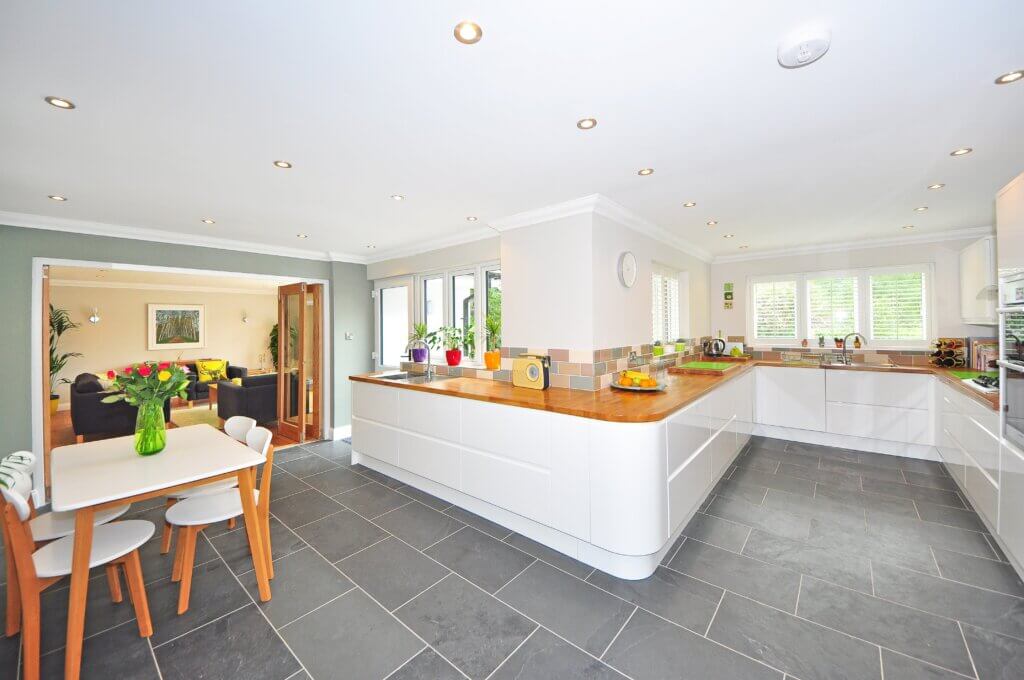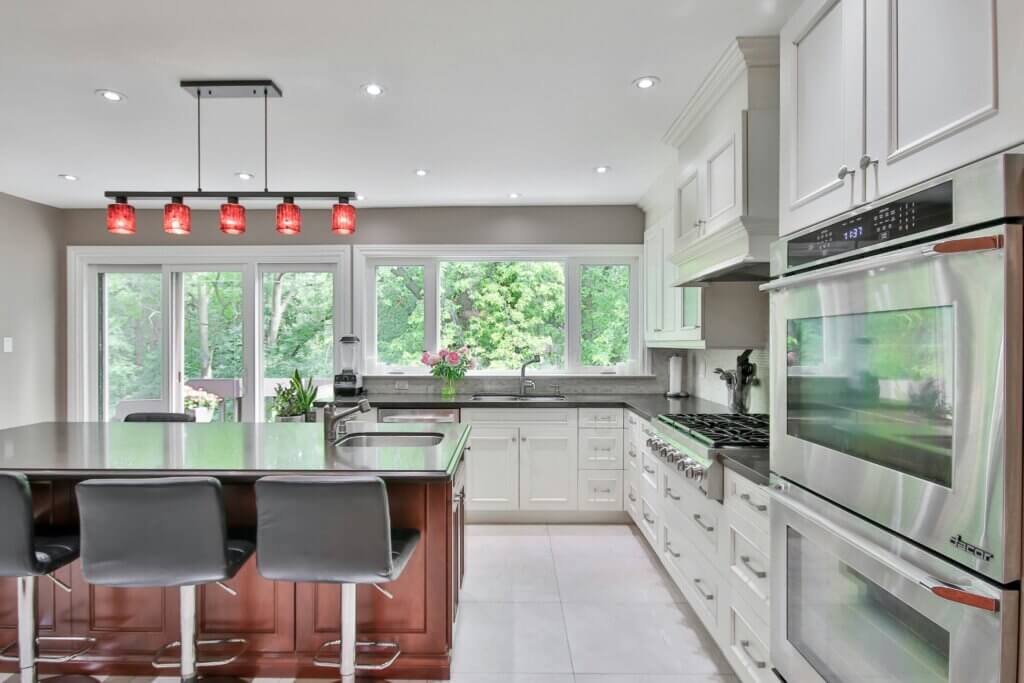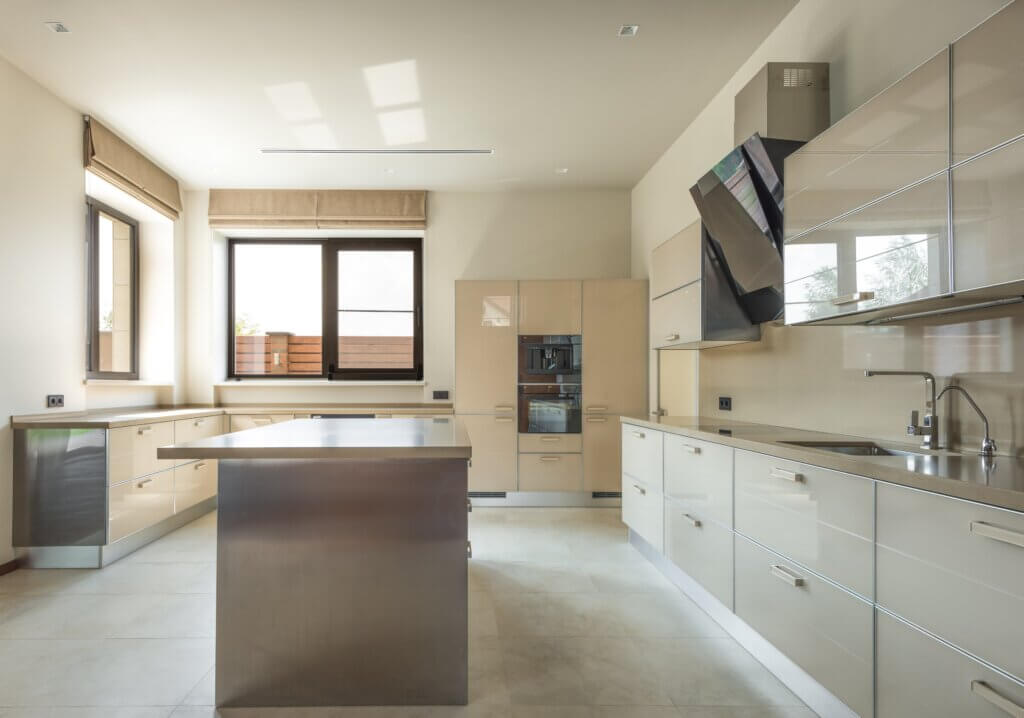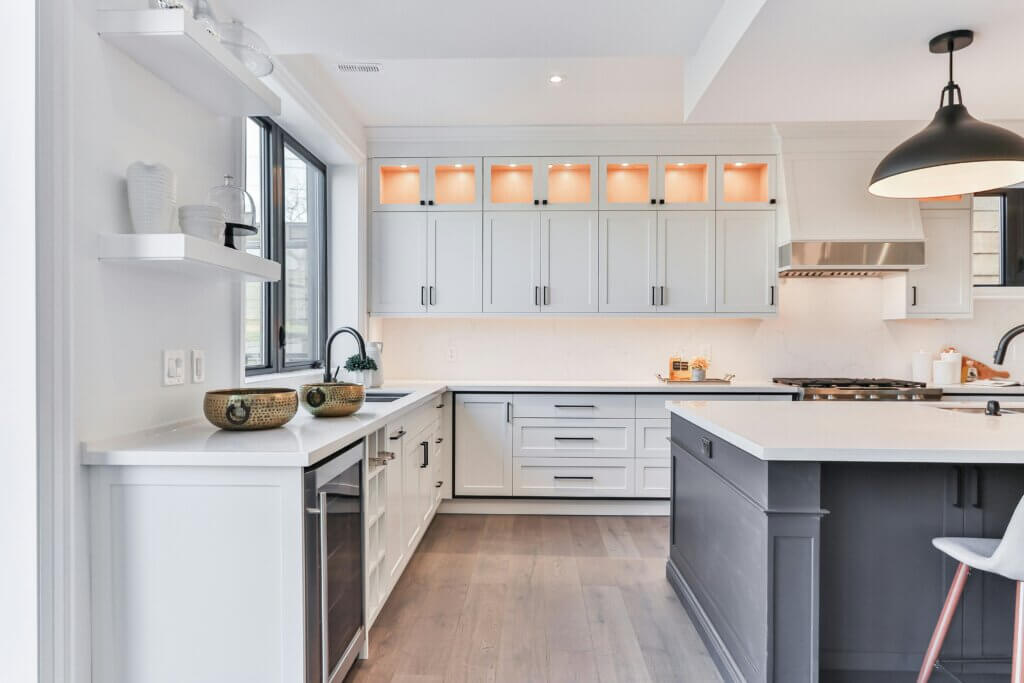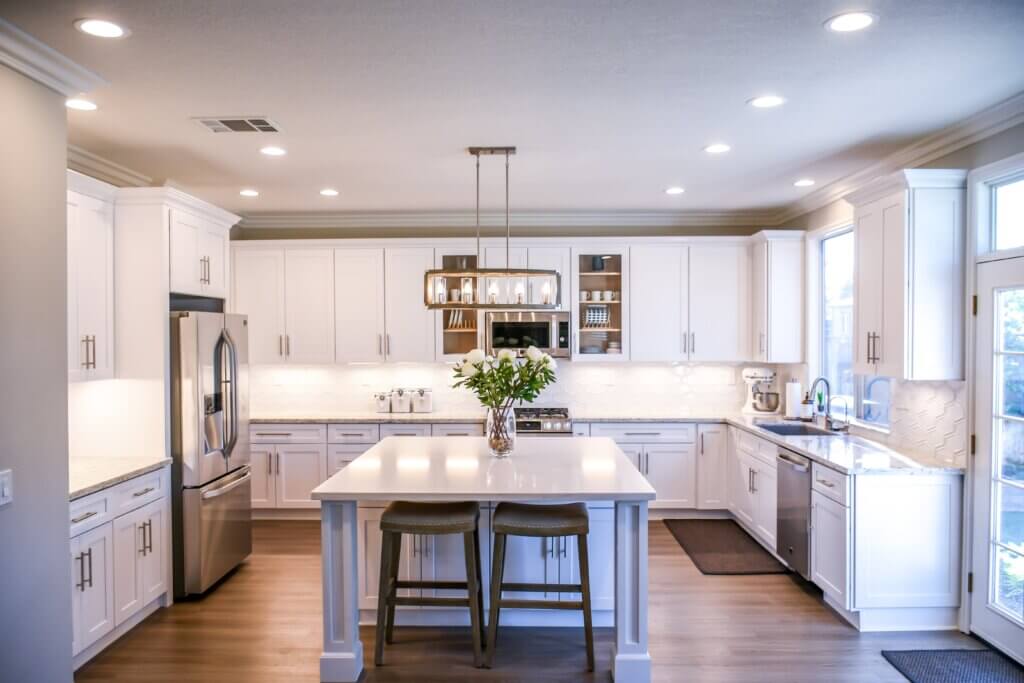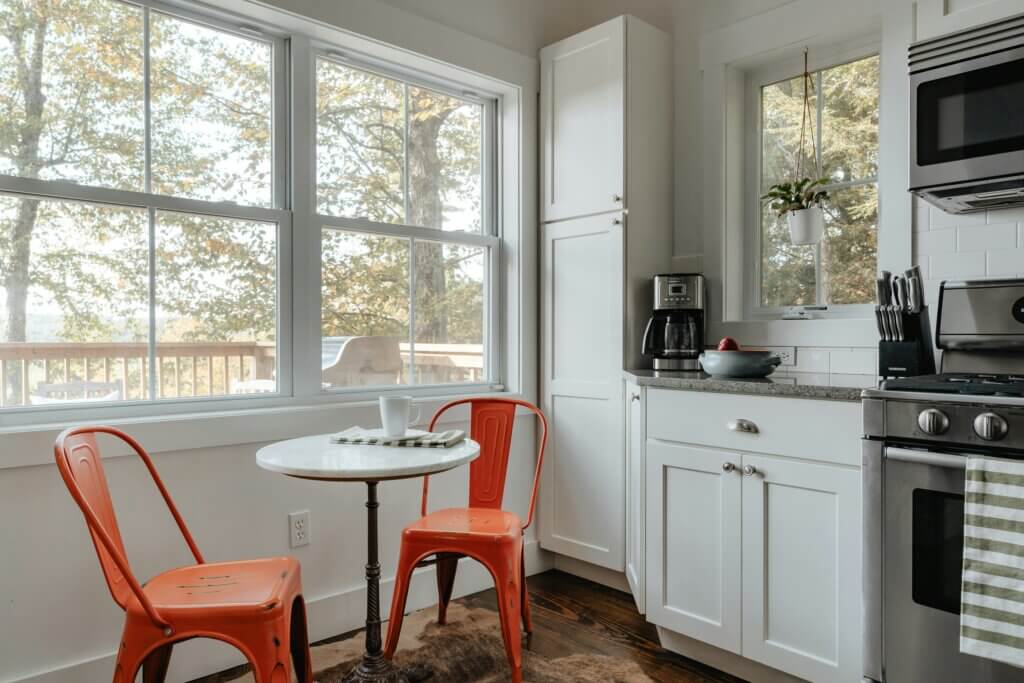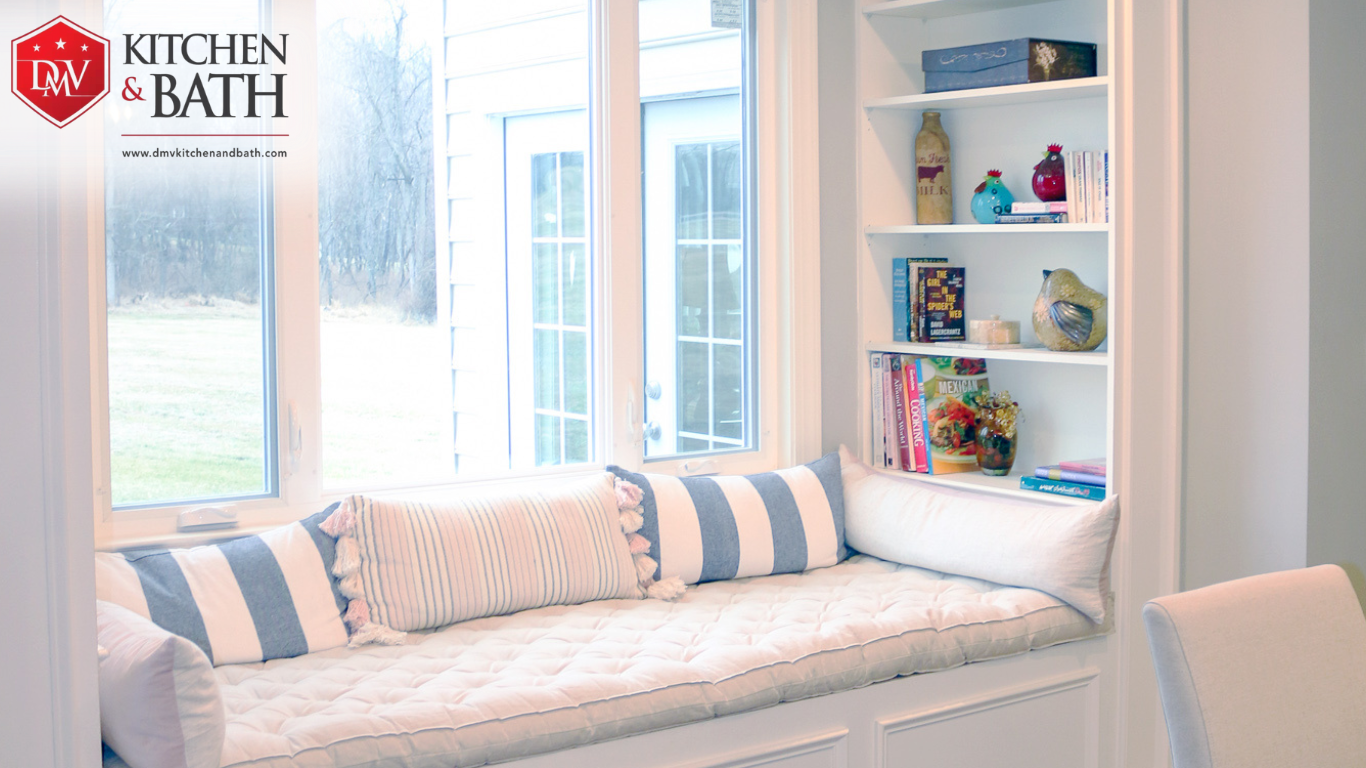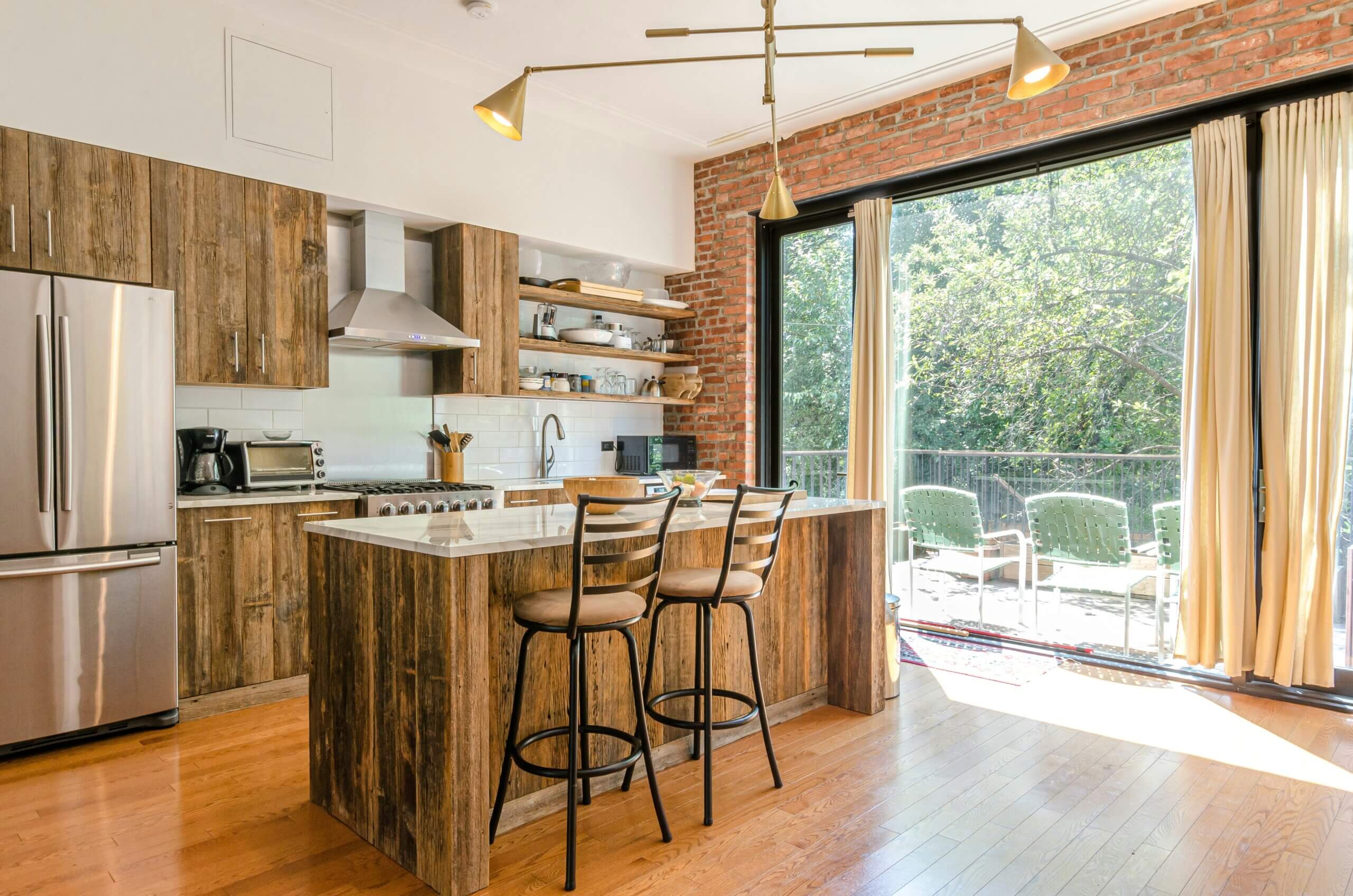
Enliven Your Kitchen Design With These Simple Natural Lighting Fixes9 min read
Imagine this – it’s early morning, you grab a cup of coffee and sit around the table eating breakfast, and a ray of sunlight breaks through your window, illuminating your kitchen in a delightful kind of way bringing a positive mood. If only mornings could be like this forever, right? Indeed, natural lighting in your kitchen can bring a good feeling and vibes.
The kitchen is the heart of every home, where culinary magic happens, and memories are created. One often overlooked yet essential aspect of designing a kitchen is the incorporation of natural lighting. Natural lighting is a powerful element that can significantly enhance the ambiance and atmosphere of any space. The interplay of sunlight streaming through windows can create a warm and inviting environment, making a room feel more spacious, cheerful, and energetic.
Contents
Benefits of Natural Lighting
Natural light not only enhances the aesthetics of the space but also brings a myriad of benefits that positively impact our well-being and overall cooking experience.
Boosts Mood and Productivity
Studies have shown that exposure to natural light can have a significant impact on our mood and productivity. Sunlight stimulates the production of serotonin, a neurotransmitter responsible for regulating mood and promoting a sense of well-being. A well-lit kitchen filled with natural light can create a cheerful atmosphere, making cooking a more enjoyable and productive activity.
Enhances Visual Appeal
Natural light has the unique ability to showcase the true colors of materials and finishes in your kitchen. From vibrant fruits and vegetables to beautiful granite and quartz countertops and custom bathroom vanity or cabinets, everything looks more appealing when bathed in sunlight. The natural lighting adds depth and dimension to your kitchen, creating an inviting and attractive space for family and guests.
Reduces Energy Consumption
Maximizing natural light in your kitchen can lead to reduced reliance on artificial lighting during daylight hours. This, in turn, helps you cut down on your energy consumption and lowers your electricity bills. Embracing natural lighting aligns with eco-friendly practices, reducing your carbon footprint and contributing to a more sustainable lifestyle.
Improves Air Quality
Good natural lighting is often accompanied by proper ventilation. When you open windows or use skylights to invite sunlight into your kitchen, it promotes better air circulation. This helps to remove stale air and kitchen odors while reducing the buildup of humidity, preventing the growth of mold and mildew.
Supports Health and Well-being
Exposure to natural light has been linked to several health benefits. Regular exposure to sunlight is essential for the body’s production of vitamin D, which is vital for strong bones, a healthy immune system, and improved overall health. Integrating natural light into your kitchen space can help you maintain a healthier lifestyle.
Reduces Eye Strain
A well-lit kitchen reduces eye strain while preparing meals and reading recipes. Unlike harsh artificial lighting, natural light is gentle on the eyes and can prevent headaches and eye fatigue during extended cooking sessions. It also provides better visibility for intricate tasks, ensuring safer food preparation.
Makes the Space Feel Larger
Natural light has the power to open up a room, making it feel more spacious and welcoming. By flooding your kitchen with sunlight, you can create an illusion of a larger space, even in smaller kitchen layouts. This is particularly easy and beneficial for apartments or homes with limited square footage.
Natural Lighting Vs. Artificial Lighting
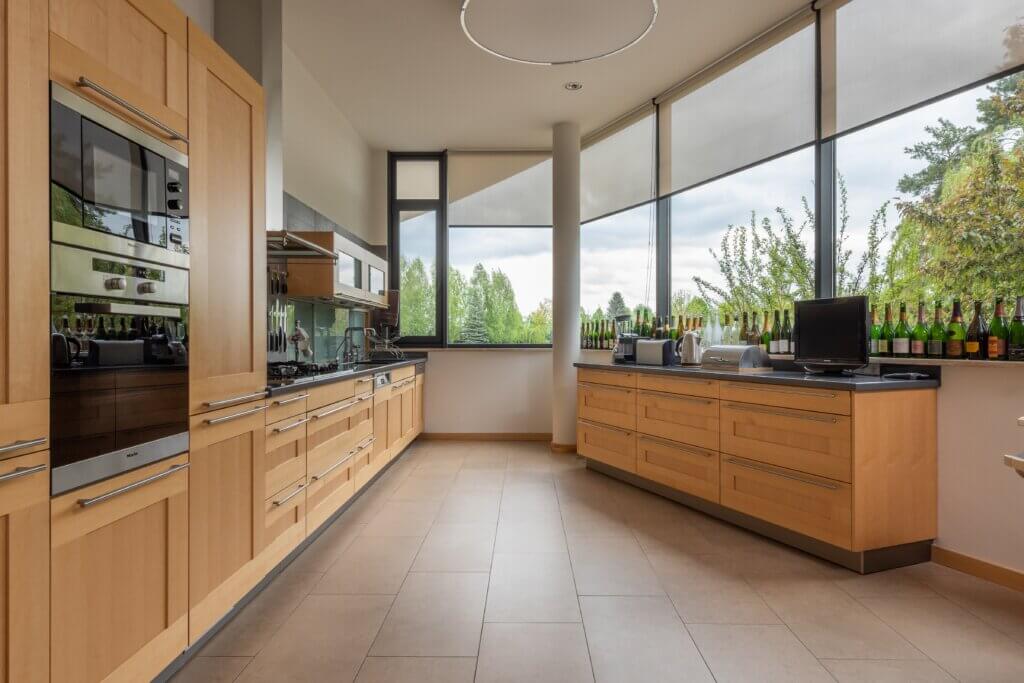
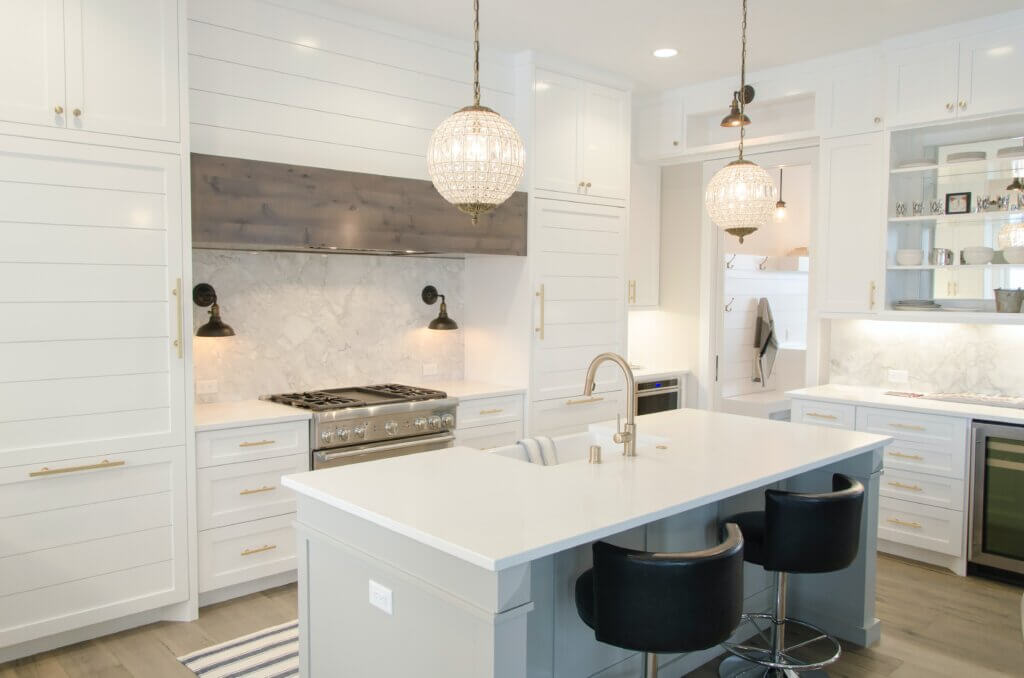
The distinction between natural and artificial light in a bathroom is marked by its sources, characteristics, and effects. Natural light, derived from the sun, offers a dynamic illumination that varies throughout the day in intensity, color temperature, and direction, providing a more accurate representation of colors and contributing to positive mood and well-being. However, its availability is contingent on factors like time, weather, and location.
On the other hand, artificial light, generated by electric sources, ensures consistent illumination irrespective of external conditions. While lacking some health benefits associated with natural light, artificial lighting allows for precise control and customization, accommodating privacy concerns and offering a dependable source of light day and night.
Often, a thoughtful installation or combination of both types optimizes functionality and aesthetic appeal in kitchen lighting design. Consider installing windows or skylights to bring in natural light and supplementing it with artificial lighting for consistency.
Simple Fixes To Increase Natural Lighting in Your Kitchen
Fortunately, there are several simple yet cost-effective fixes to maximize the amount of natural light in your kitchen space. If you are planning for your kitchen remodeling project, Let’s explore some natural lighting fixes that will illuminate your space with nature’s glow.
Optimize Window Placement
Assess the placement of your windows to ensure they are strategically positioned to capture the most sunlight throughout the day. South-facing windows receive the most sunlight, while north-facing windows tend to receive the least. Consider enlarging or adding windows to darker rooms to introduce more light.
Larger windows or combinations of windows, such as bay or picture windows, can maximize the amount of natural light entering the kitchen. Install windows near key work zones, such as the sink, stove, and meal prep areas. This ensures that these task-intensive areas receive ample natural light, making cooking and cleaning tasks more pleasant.
Aim for a balanced appearance by placing windows symmetrically. This can create a harmonious and visually appealing kitchen design.
Clear the Obstructions
Ensure that your windows are free from any obstructions such as heavy curtains, furniture, or tall plants that may block the flow of light into the room. If you need window treatments for privacy or shading, opt for light-enhancing ones like frosted glass or light-filtering shades that still allow some sunlight to penetrate.
Assess the exterior of your home for potential obstructions like trees or neighboring structures that might block sunlight. Trim trees or adjust window placement accordingly. If possible, consider relocating or modifying structures to allow more sunlight to reach the windows.
Install Skylights or Sun Tunnels
Skylights are an excellent way to introduce more natural light into your kitchen, especially if you have limited wall space for windows. They can be placed strategically to provide light during different times of the day.
On the other hand, sun tunnels, also known as solar tubes or tubular skylights, are an attractive and innovative way to capture sunlight and channel it through the surface of a reflective tube, brightening up areas that may not have direct roof access.
Both options not only enhance the aesthetic appeal of your home but also provide energy-efficient lighting solutions, reducing the need for artificial lighting during the day.
Reflective Surfaces
Incorporate reflective surfaces into your interior design to bounce light around the room. Mirrors, glass tabletops, and glossy finishes on furniture or walls can effectively amplify the natural light, making the space appear brighter and more open.
Placing mirrors strategically can work wonders in amplifying the natural light. Consider hanging a large mirror on a wall opposite a window to bounce light across the kitchen. In addition, you can think about using mirrored splashbacks to reflect light and visually expand the space, making it look brighter and more spacious.
Introduce metallic finishes in the form of appliances, fixtures, counters, or accessories. Stainless steel or chrome surfaces can reflect light and add a touch of contemporary sophistication to the kitchen.
Light-Colored Décor
Opt for light-colored paint, wallpaper, and furniture to create a sense of airiness. Light colors reflect more light and can brighten up a room, especially when paired with natural lighting. Pastel and neutral color schemes such as white, off-white, blue, green, and stone colors would be a perfect match. Pairing it with light-colored materials like quartz, marble, or light-toned granite for countertops would be an excellent choice.
Just like with walls, light-colored flooring and countertops, such as light wood or pale tiles, can help to brighten up the kitchen by reflecting natural light.
Go for light-colored kitchen cabinets, such as white, cream, or light gray. These colors not only create a timeless and classic look but also reflect light, contributing to a brighter kitchen environment. Take it up a notch by choosing a light-colored backsplash to complement your cabinetry.
Utilize Light Fixtures
On cloudy days or during evenings, you can supplement natural light with artificial lighting. Choose fixtures that mimic natural light as closely as possible to maintain a bright and welcoming ambiance.
Hang pendant lights over the kitchen countertops, island, or dining table. These versatile fixtures provide focused task lighting and can serve as stylish focal points. Or, you can also contemplate installing a chandelier over the kitchen countertops or table for a touch of elegance and ambient lighting.
For kitchens with large kitchen islands, consider linear suspension lights or multiple pendant lights to evenly illuminate the workspace. Ensure proper spacing for a balanced look.
Don't Forget To Clean
Oh, yes. Cleaning makes a huge difference in the overall impact of kitchen lighting. You must regularly clean your windows, both inside and outside, to ensure they allow the maximum amount of natural light to enter the kitchen. Make cleaning a regular part of your kitchen maintenance routine to prevent the accumulation of dirt and grease.
Wipe down windows regularly with a mixture of mild dish soap and water. Use a soft sponge or cloth to avoid scratches. For stubborn spots or streaks, mix equal parts water and white vinegar. Apply with a microfiber cloth and wipe the windows dry.
If you have mirrors in the kitchen, clean them regularly to maintain their reflective properties. Use a glass cleaner for streak-free, durable results.
Key Takeaway
A well-designed lighting scheme and installation are essential for a functional and visually appealing kitchen. Combining different types and sizes of lighting sources, experimenting with fixtures, and incorporating smart technology can help you achieve the perfect balance of style and functionality in your culinary space.
By incorporating these simple fixes, you can increase the amount of natural light in your kitchen design, and create a more uplifting and enjoyable space for all your culinary adventures and family gatherings. On top of that, be sure to choose a professional kitchen and bath remodeling contractor for your project to guarantee the results of your project, and let there be light!
Transform your kitchen into a vibrant and functional culinary haven!
Upgrade your space now for a brighter, more inviting atmosphere. Contact us today to schedule a consultation and let our team illuminate your kitchen and bath remodeling journey.





